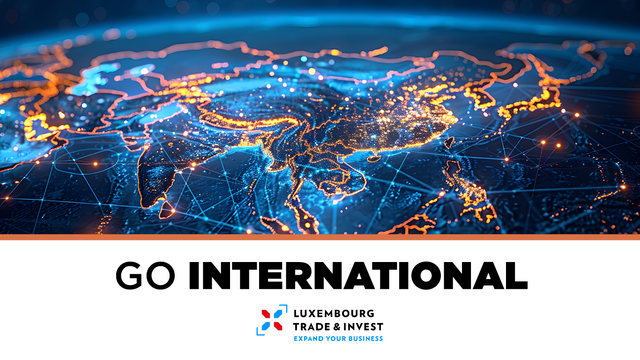
Kapitel
Over the past 20 years, macroeconomic stability, trade openness, and a favorable international environment have enabled Peru to become an upper-middle-income economy. GDP per capita jumped from US$2,126 in 2003 to US$7,790 in 2023. Sound, prudent macroeconomic policies have resulted in low public debt, substantial international reserves, a credible central bank, and a robust financial system.
In terms of regional and international finance and partnerships to catalyse international resources, financing from the IDB Invest and the International Finance Corporation plays a crucial role in promoting private-sector investment across diverse sectors, such as social infrastructure, tourism, manufacturing, and the digital economy. Additionally, the National Sustainable Infrastructure Plan for Competitiveness prioritises large-scale projects worth nearly USD 40 billion, focusing on sustainable infrastructure in sectors such as health, education, transportation, and energy. The National Policy for the Promotion of Private Investment in Public-Private Partnerships and Asset Projects seeks to close public infrastructure gaps and boost economic growth by encouraging private-sector participation. This policy, supported by the World Bank, emphasises the importance of transparent regulatory frameworks and efficient project management.
Source: The World Bank, OECD
Kennzahlen
- Fläche
- 1,285,216 km2
- Bevölkerung
- 33,845,617 (2023)
- Regierungsform
- presidential republic
- Sprachen
- Spanish (official) 82.9%, Quechua (official) 13.6%, Aymara (official) 1.6%, Ashaninka 0.3%, other native languages
- BIP
- $267.600 billion (2023)
- Wachstumsrate
- -0.6% (2023)
- HDI
- 87
- Hauptstadt
- Lima
Makroökonomische Indikatoren
GDP growth is projected to be 3.1% in 2024, before moderating to 2.8% in 2025 and 2.6% in 2026. Growth will be driven by private consumption, supported by lower inflation, pension fund withdrawals, and a recovery in employment. While private investment is projected to recover moderately, ongoing political uncertainty may dampen its pace. Exports will benefit from sustained global demand, and inflation will remain near the central bank target of 2%. However, significant risks persist due to geopolitical and domestic policy uncertainties.
The central bank is expected to continue lowering the policy rate through early 2025 and then hold the rate steady. Fiscal policy has stimulated growth in 2024, with the deficit expected to exceed the fiscal rule target due to revenue shortfalls and increased spending. The government plans to reduce the deficit over 2025-26 to meet fiscal rules, though this will be challenging due to persistent spending pressures. To create the fiscal space needed for infrastructure and social investment, it will be essential to improve public spending efficiency and boost revenue generation.
Source: OECD
IMF Statistics:
| Subject descriptor | 2023 | 2024 | 2025 | 2026 | 2027 |
|---|---|---|---|---|---|
|
All Items, Consumer price index (CPI), Period average, percent change Percent (Units) |
6.269 |
2.351 |
1.727 |
1.868 |
2.018 |
|
Current account balance (credit less debit), Percent of GDP Percent (Units) |
0.324 |
2.169 |
1.762 |
1.173 |
0.334 |
|
Current account balance (credit less debit), US dollar US dollar (Billions) |
0.88 |
6.39 |
5.611 |
3.831 |
1.151 |
|
Exports of goods and services, Volume, Free on board (FOB), Percent change Percent (Units) |
3.857 |
5.233 |
1.774 |
2.358 |
2.139 |
|
Gross domestic product (GDP), Constant prices, Percent change Percent (Units) |
-0.403 |
3.303 |
2.93 |
2.699 |
2.486 |
|
Gross domestic product (GDP), Current prices, Per capita, US dollar US dollar (Units) |
8057.27 |
8649.541 |
9255.722 |
9397.957 |
9821.479 |
|
Gross domestic product (GDP), Current prices, US dollar US dollar (Billions) |
271.78 |
294.675 |
318.48 |
326.608 |
344.74 |
|
Imports of goods and services, Volume, Cost insurance freight (CIF), Percent change Percent (Units) |
-1.381 |
8.907 |
9.257 |
4.08 |
3.827 |
|
Unemployment rate |
6.784 |
6.4 |
6.45 |
6.5 |
6.5 |
Source: IMF Statistics
Luxemburg und das Land
Existing conventions and agreements
Non double taxation agreement
In order to promote international economic and financial relations in the interest of the Grand Duchy of Luxembourg, the Luxembourg government negotiates bilateral agreements for the avoidance of double taxation and prevent fiscal evasion with respect to Taxes on Income and on fortune with third countries.
None
Air Services agreement
None
Source: Administration des contributions directes
Weitere Informationen
Foreign Trade
The Statec Foreign Trade statistics provide information on the trade of goods - by product and by country. This information is collected respectively through the INTRASTAT declaration and on the basis of customs documents.
You can see the statistics on the website of the Statec.
Contact points in Peru
Luxembourg is represented by the Ambassade Royale des Pays-Bas à Lima
Competent post for consular affairs by the Ambassade du Royaume de Belgique à Lima
Source: Ministry of Foreign Affairs of Luxembourg
Country risk as defined by Office du Ducroire for Peru
Ducroire is the only credit insurer covering open account deals in over 200 countries. A rating on a scale from 1 to 7 shows the intensity of the political risk. Category 1 comprises countries with the lowest political risk and category 7 countries with the highest. Macroeconomics experts also assess the repayment climate for all buyers in a country.
Link: Ducroire Office - Country Risk for Peru



